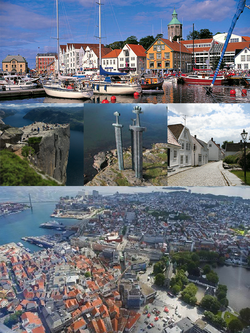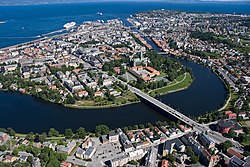This is a list of urban areas in Norway by population, with population numbers as of 1 January 2024.
Statistics Norway, the governmental organisation with the task of measuring the Norwegian population, uses the term Norwegian : tettsted, lit. 'dense place'; (meaning urban settlement or urban area), which is defined as a continuous built-up area with a maximum distance of 50 metres (160 ft) between residences unless a greater distance is caused by public areas, cemeteries or similar reasons. The continuously built-up areas in Norway (urban areas) with the highest population are: [1]




